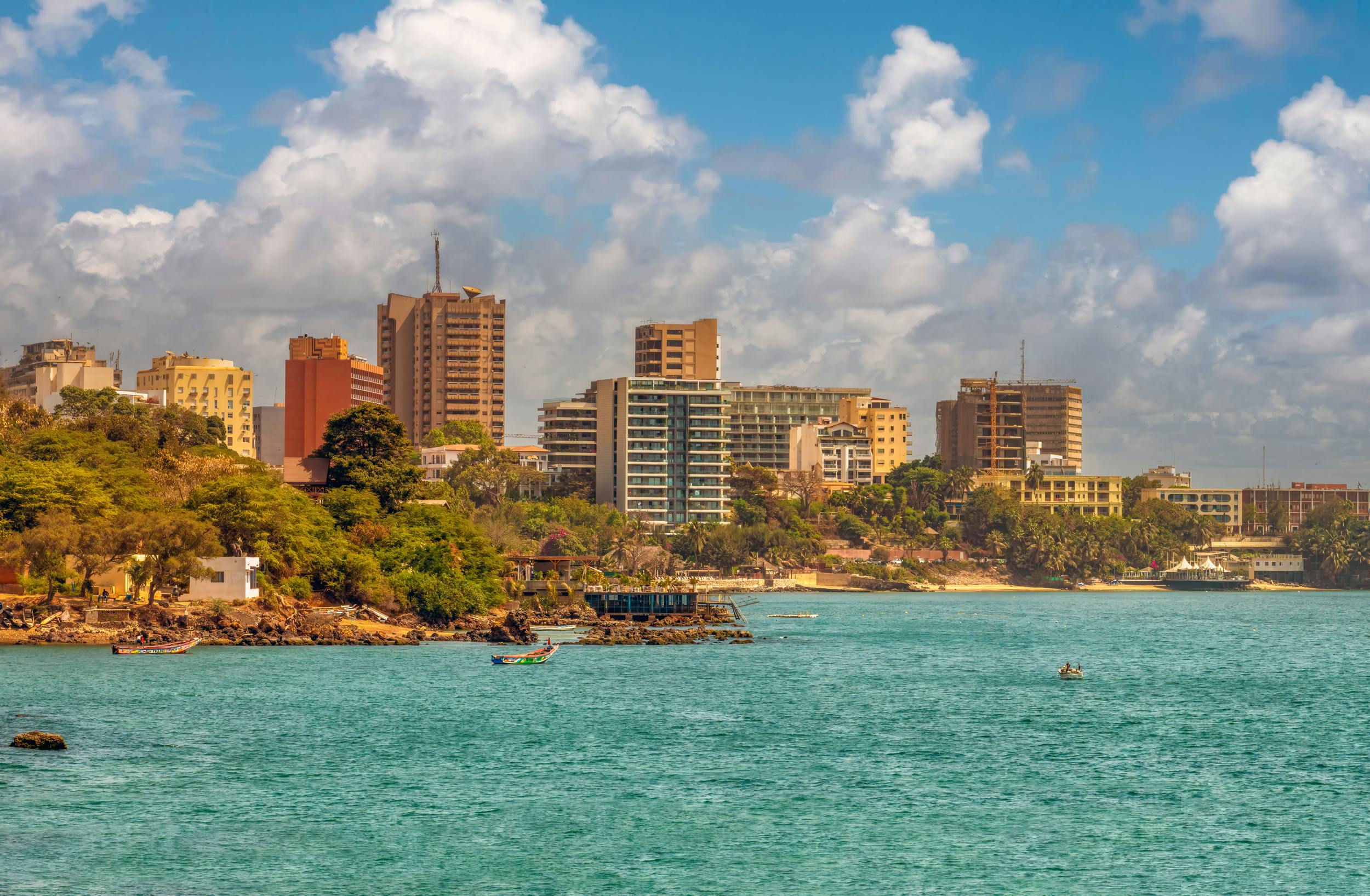Dishing on Dakar: How One Woman Found Her Dream-Come-True Senegalese Entrée
Across the street in the shadow of the African Renaissance Monument, Dakar’s major tourist attraction, a trendy cafe offers visitors a place to rest after climbing hundreds of stairs to stand at the foot of the 164-foot-tall bronze beacon.
My family and I gathered at a table inside, where chandeliers and eclectic modern furniture set the tone, and U.S. pop music and Afrobeats alternated over the sound system. My anticipation grew as I sipped my sweet bissap juice, a local specialty made with steeped Roselle flowers, similar Sorrel, a Caribbean favorite. Without hesitation, I ordered the thieboudienne (best pronounced as cheh-boo jen for English speakers) for my first in-country taste of Senegal’s national dish.

I loved thieboudienne long before stepping foot in Senegal. I was introduced to the dish thanks to many Nigerien (from Niger, not Nigeria), Ivorian and Togolese women living in the U.S. who made it to sell in restaurants or to welcome guests to their home.
Thieboudienne may originally hail from Senegal, but today, most of West Africa embraces the dish. Many chefs and home cooks put their own spin on its flavors, whether using one or several hot peppers to turn the heat up or replacing the fish with lamb to make thiebouyapp, a variation.
I’ve accompanied my husband, who’s from Niger, to many such restaurants and homes, where heaps of West African food are offered. My eyes always scan for thieboudienne. I enjoy it so much that I had it catered for our wedding, and years later, for our son’s baptismal ceremony.

The quest for the best
Thieboudienne means “rice with fish” in Wolof, the Senegalese language. Those are the heart of thieboudienne, but as is the case with any legendary fare, any good thieboudienne recipe comes alive in the details. Quartered pieces of tender cabbage, carrots and eggplant or cassava sit atop a bed of broken rice – jasmine rice that has been broken into smaller pieces during the milling process – which is then simmered in red sauce.
In West Africa, this broken rice is cooked in tomato paste, onions and at least one fiery scotch bonnet or habanero pepper (but often more). It’s enough to spike intra-country spats: The so-called Jollof wars – terse online debates about which country makes the best rice base, or jollof, for rice dishes found throughout West Africa. I’m convinced no one comes close to Senegalese jollof, with the smoky tomato and umami flavors of thieboudienne.
The crowning element of a hot plate of thieboudienne is the dienne in Wolof, or fish. In Dakar (pictured in photo at top), thieboudienne is at its best with freshly caught capitaine, a moist, mild fish, although in a pinch, tilapia will do. The capitaine is pan-fried and typically split in half, and diners choose which part of the fish they prefer. My husband chooses the head, and I, too meek to eat fish eyes (which I hear are quite tasty), choose for the tail.
My first plate of thieboudienne in that day was disappointing. It was pleasingly plated, but it lacked depth: The flavors of tomatoes and tamarind combined with the hot peppers were missing. The rice was packed into a neat cube next to stainless steel ramekins full of tamarind dipping sauce. Surely I would find better-tasting thieboudienne in the country that birthed this incredible dish.
I was committed to eating as much thieboudienne as I could for lunch and dinner across Dakar to find a satisfying plate.

We tried plates of thieboudienne across Dakar’s Cape Verde peninsula, from seaside restaurants in Ngor, in between shopping trips in Dieuppeul and visits to family friends in the Parcelles Assainies neighborhood.
I even ate a plate at a restaurant next to the pier after a boat ride to Gorée Island. Each version sufficed, but they weren’t the mind-blowing plate I was looking for, although each brought a new interpretation, a slightly new flavor remix.
A dream come true at last

On our final day, we took a taxi to Marché Sandaga, Dakar’s largest market, in which anything you can imagine is available for barter. The afternoon sun pelted us as we hurried underneath tiny corners of shade from each vendor’s umbrella lining the street.
Vendors’ wares run the gamut: fabrics, gold bracelets, peanuts to net sponges, known for their excellent exfoliation. As we approached the middle of the market, our eyes fixed on a small building with tangerine-colored walls. We stepped inside Restaurant Awa Guisse to grab a quick bite and to try to cool off.
Inside, the restaurant’s dining room walls were painted as bright orange as habanero peppers. About two dozen red tables were filled with people sitting in chairs covered in orange seat covers as they drank tea and talked with friends over lunch. A news broadcast played on televisions in each corner of the dining room, with the sound of the broadcast drowned out by the hum of conversations in Wolof and French.
I ordered my usual, this time with a slight bit of weariness after eating the same dish several days straight. My husband, who had enjoyed a fuller scope of Senegalese cuisine during our trip, joined me this time, ordering his own plate of thieboudienne. His helping came out with a small habanero pepper atop his rice, mirroring the wall color around us.
As I sat up straight as I chewed my first bite, my weariness lifted. This plate of thieboudienne was what I’d been searching for. The flavors of cabbage, carrot and jollof rice were robust, and the fish was flaky and delicious. I’d found the thieboudienne for which I would always remember Dakar.
